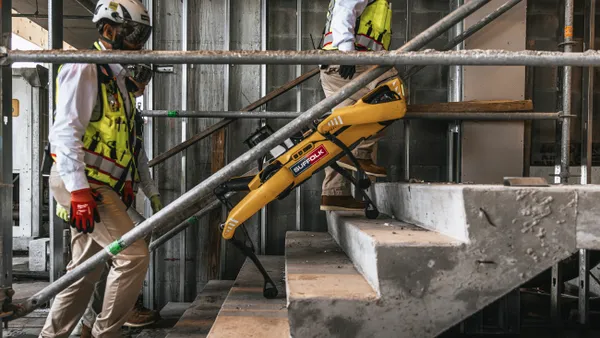For every construction project stakeholder – from site foremen and superintendents, to general contractors to the CEO – nothing has a greater impact on each of their bottom lines than the sharing and receiving of project information. In the age of cloud technology, antiquated paper AEC workflows should be set aside and replaced with a more productive solution. A compelling case can be made for making this change. Here are five ways you’re hurting your bottom line by clinging to inefficient document management practices.
1. Your document manager is relying on manual coordination – opening the project to mistakes.
The document manager on any project bears a tremendous burden. Should something go wrong, be it a cost overrun or necessary site re-work, focus quickly turns to them. Document managers are tasked with overseeing multiple versions of thousands of sheets of data, bridging the gap between 2D and 3D plans, tying together different systems and making sure this info is available to all stakeholders at all times. Yet with so much manual coordination, it’s a wonder there aren’t more mistakes. Alleviate common document manager pain points by automating sheet extraction, naming and structuring, granting role-based and version-based access, and allowing all parties to retrieve the same information at all times.
2. You’re keeping separate 2D plans and 3D models, creating more steps for each task.
The design end of a construction team is usually focused on rendering their ideas via artistic 3D models. On the flip side, 2D models and sheets are used as “working documents” that are heavily edited before they even reach the construction team. The issue is that too many stakeholders must move between the two models, which is both a time trap and an opportunity to introduce mistakes. Furthermore, any search for changes can be frustrating when two different plans must be referenced – especially if they are stored in different applications. By choosing a singular, foundational software you’ll find you can tighten up the timelines and help reduce errors, not to mention eliminating the manual process of publishing sheet sets associated with models.
3. You’re paying for each stakeholder’s individual set of tools.
In the current AEC landscape, many designers are using one set of digital tools, while field construction staff are using another set. Document managers need additional tools to fill in the gaps between the two. The AEC C-suites meanwhile are footing the bill for all these specialty tools, despite a clear lack of interoperability. Obviously, this can end up in quite a large bill. Instead, consider a seamless tool that can meet the technical needs of an architect while being straightforward enough for field workers, all lumped together as a single budget line item.
4. Your entire team isn’t connected to the same plan, increasing timelines.
A site superintendent’s day-to-day focus should be on supporting their team. However, many find themselves constantly needing to travel to a trailer for the latest round of documentation. Further distracting them from their duties, they have to wait for feedback as document managers take data offline to make the required changes. This interruption to the workflow means longer build timelines. A more efficient process, for instance, involving builders uploading a picture of an issue on site and sharing it directly with an engineer, can mean superintendents and their teams can complete projects on time. With more effective, streamline tools, corrective decisions can be made in a span of hours instead of days.
5. Your tool wasn’t built for your purposes, so you’re improving solutions.
Many cloud systems out there allow file sharing between users and have offline syncing abilities. However, some of these platforms charge by the user, while others charge by storage capacity. With the financial risks that come with incorrect version usage, some of these systems don’t offer much in the way of true utility for AEC professionals. BIM 360 Docs provides logical workflows, along with standardized curation and 2D and 3D file viewing, specifically because it was created just for builders.
BIM 360 Docs can help improve construction workflows from beginning to end. Start using it today for FREE.









